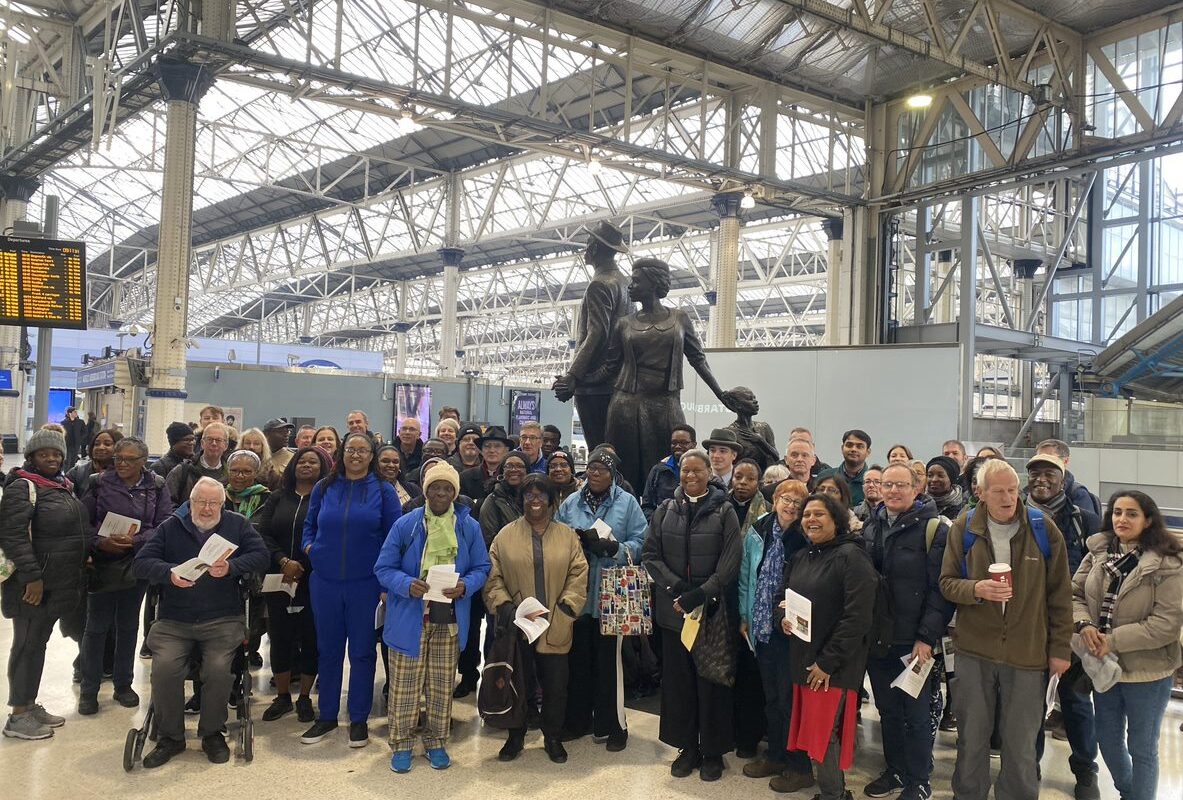On a cold but dry Autumn day a diverse group of 60 people, led by the Bishop of Willesden, embarked upon the first Diocese of London pilgrimage for racial justice. The seven and a half mile walking journey through central London – from Waterloo to Notting Hill – highlighted places of significance for Black history in our Capital.
Each stop gave opportunity for learning, for hearing readings from scripture, for prayer. Each step brought time for observation, for reflection and worship, sometimes for silence and for conversations along the way.
Some people joined for part of the journey but most walked the whole distance. We walked together, recognising that our experiences of this city have been very different.
The day started at 9am with opening liturgy by the new National Windrush Monument, at Waterloo Station. Created by Basil Watson, the striking bronze sculpture of a young couple and their daughter raised up on a pile of suitcases, each connected, each looking determinedly outwards, pays tribute to the dreams, ambitions and resilience of the Windrush pioneers. There, we committed to walk together with our own individual intentions and a collective hope to build a more racially just society as companions on the road.
Also in Waterloo, on the banks of the Thames, was another imposing, powerful sculpture showing resilience and courageous service. This time a black woman – Mary Seacole, the 19th century Jamaican nurse – chiming with this year’s Black History month theme of ‘celebrating our sisters’. In the words of sculptor Martin Jennings, “the sculpture shows her marching defiantly forward …as if confronting head on some of the personal resistance she had constantly to battle.”
From Waterloo a short journey was made across the river to Westminster. We visited the church in the grounds of the Abbey, St Margarets, to remember three remarkable figures from the 18th Century: Olaudiah Equiano, Ignatius Sancho and Ottabah Cugauno. Each were brought to London as slaves, bought their freedom and became instrumental in the abolition of slavery.
A long walk followed giving time to talk and wonder at the courage required to pioneer change. The opulence of Mayfair gave way to the busy length of Oxford Street to view the colourful new paintings inspired by Cuguano at St James’s Piccadilly. They are paintings that speak of freedom and life. As one school child visitor had said, they suggest what the world might have looked like had the transatlantic slave trade never happened.
At this halfway point of the pilgrimage, we paused to hear the experiences and reflections of some in our group. We heard painful truths and sober lament. Emotional words were held together by our Bishop. And we continued our journey together.


In the pews of St Clements church in the shadow of Grenfell we ended our day, recommitting ourselves to follow in the footsteps of those courageous women and men who have gone before, to be people of reconciliation, embodying love and serving a world in need.



